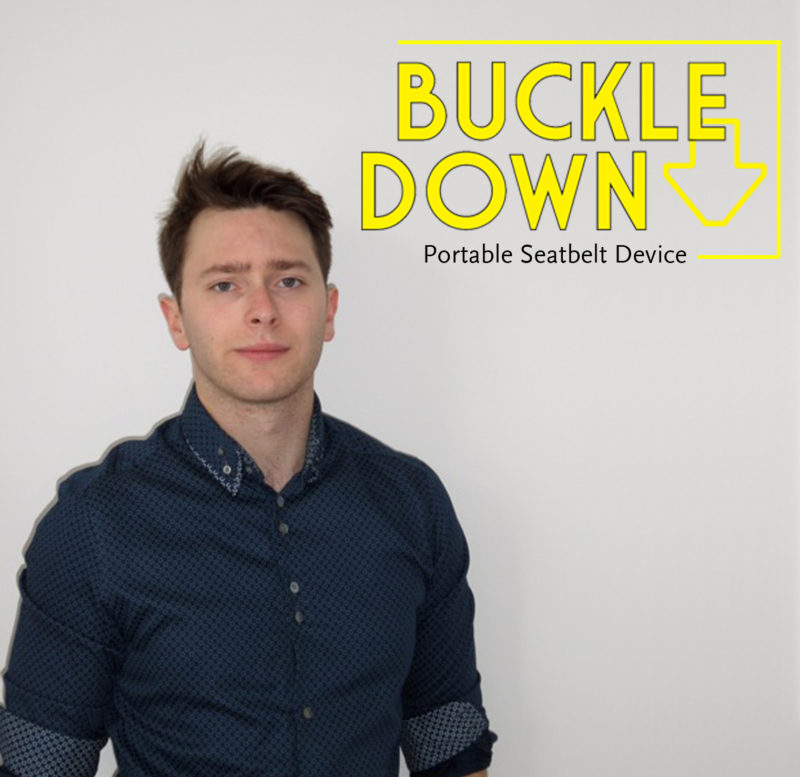Back pain, tricky seat belts and memory loss were some of the challenges targeted by this year’s Designing for the Future entrants.
Designing for the Future run by The Future Perfect Company in conjunction with the University of Brighton encourages student designers to think about the challenges and issues affecting our ageing population – and to create innovative and attractive designs which allow older people to continue to live meaningful, enjoyable, active and independent lives.
This year’s joint winners were Samuel Hinkinson (BSc Product Design) and Rhianedd Dancey (BA Fashion with Business Studies).
Buckle Down, Samuel Hinkinson’s original car accessory, has been designed to make the operation of a seat belt more accessible to people with mental and physical disabilities and has the potential to make car travel easier for everyone. A really innovative idea, Samuel is in the process of a obtaining a patent.
Rhianedd Dancey’s Adventure Coat enhances posture through supportive tailoring and removable harnessing. Says Rhianedd:”A common misconception is that back pain is to be treated with bed rest, whereas in fact physical activity and mobility improves both back pain and posture. The Adventure Coat with removable posture harness and fabric texture indicators raises awareness of good posture whilst promoting physical activity and mobility…I wanted to create a collection that is both functional and practical as well as clean and chic. Through speaking to a variety of both men and women aged between 55 and 75, there seems to be a definite gap in the market for both advanced style and therapeutic couture that can be considered stylish and enjoyable to wear”.
Runner up Cameron Bacchus’ (BSc Product Design) project focused around memory loss following a Stroke. His product, GEM, aims to help a patient regain cognitive functions by remembering a specific sequence of randomly generated lights.
The winners receive a package of mentoring and support to help them to develop their products and ideas further and emulate the success of previous Designing for the Future alumni who have gone on to win further awards and establish their own design studios and workshops. Chloe Meineck who won a residency at the Design Museum for her Music Memory Box first developed as part of the Designing for the Future brief, was recently named by the Design Council as “One to Watch”.
Originally open to students from the 3D Design & Craft programmes from the College of Arts & Humanities, Designing for the Future was expanded last year to include students from BSc Product Design. This year for the first time participants also included students from Fashion, Architecture and Illustration.
Says Philippa Aldrich of The Future Perfect Company “We were delighted to welcome students from across the College of Arts & Humanities to the project this year and particularly excited to be able to include students from Brighton’s prestigious fashion & textiles courses as fashion for older people is a much neglected area. We look forward to working with Samuel, Rhianedd and Cameron to help take their projects further”.
Judges this year included Professor Anne Boddington, Dean of the College of Arts & Humanities, University of Brighton; Philippa Aldrich from The Future Perfect Company; Gretel Jones, formerly senior consumer markets policy adviser at Age UK and Tom Serpell, Director of Eastbourne – Designed for all. The project was led by Dr Tom Ainsworth and Dr Eddy Elton.



